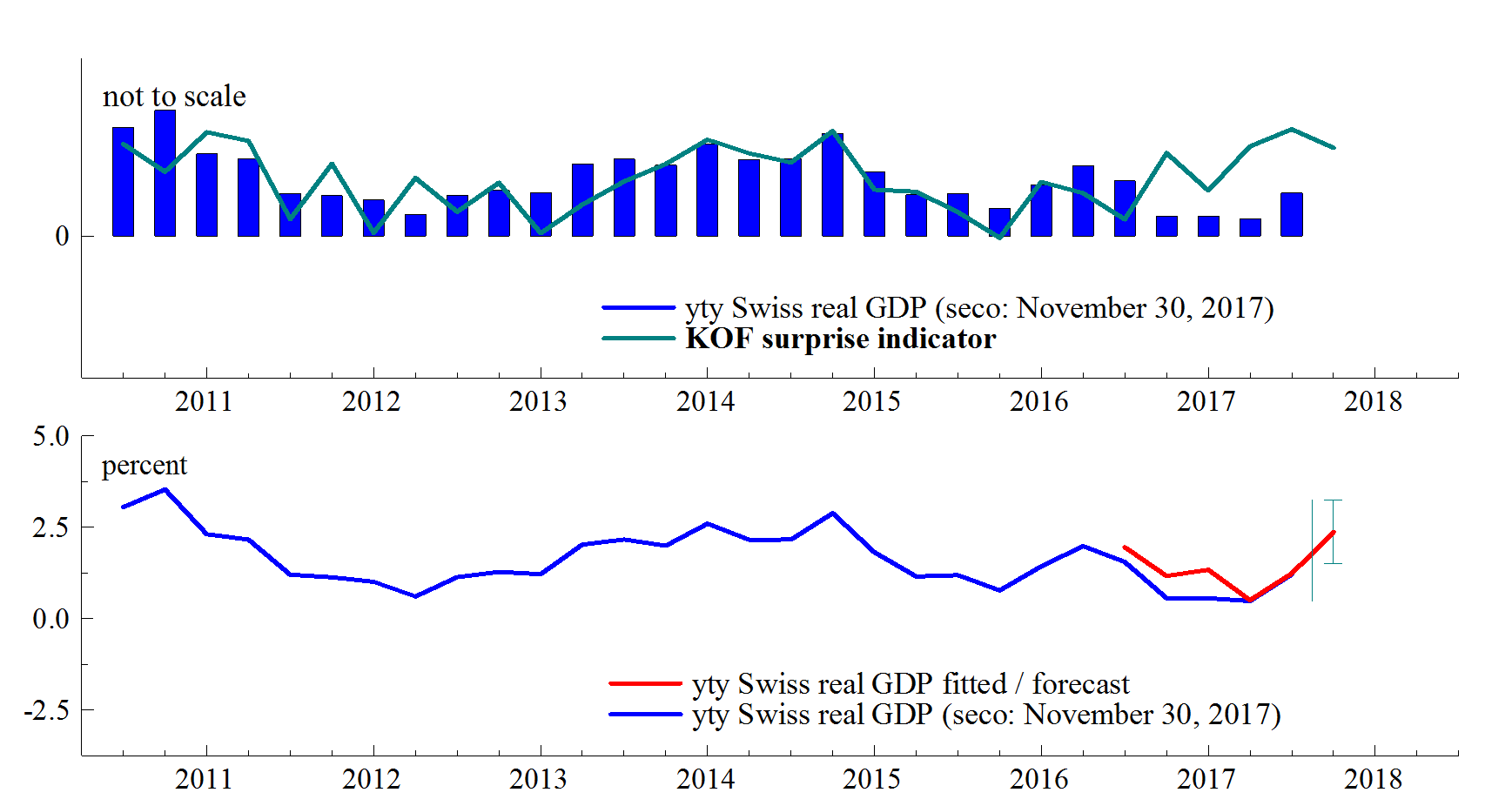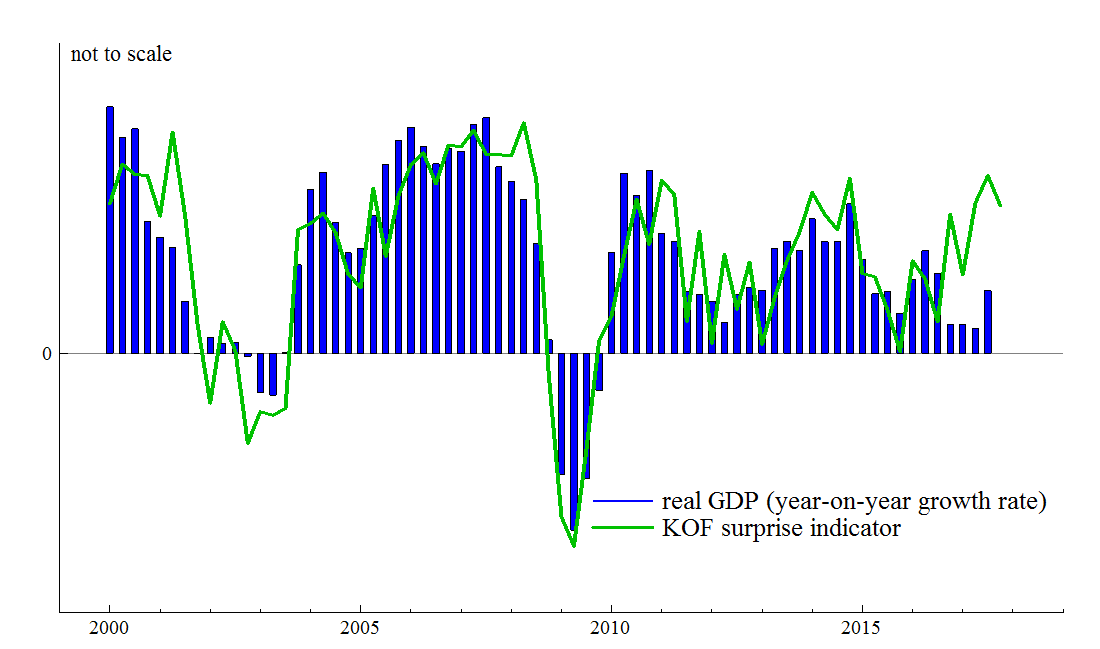| |
|
|
|
| |
T |
GDP forecast based on semantic business cycle identification |
TEST |
| |
|
Release 2018-02-21 |
|
| |
|
Figure 1: Business cycle indicator based on semantic identification in comparison to real GDP: Ex-ante forecast properties |
|
| |
|

|
|
| «home |
|
Quarterly nowcast update. Order your free personal quarterly email alert with the latest GDP estimate based on the «KOF surprise indicator». Subscribe here»
|
|
| |
|
|
|
| |
|
Forecast update. The «KOF surprise indicator» for measuring Swiss economic dynamics remains strong at -0.020 (down from a revised -0.015) in the final quarter of 2017. Despite notching down a bit from its Q3 reading, the recent update confirms positive signals from growing foreign trade, currency depreciation and declining unemployment figures. |
|
| |
|
Estimating Swiss real GDP growth with the «KOF surprise indicator» puts Swiss output growth at 2.4 percent year on year in the fourth quarter of 2017. Over the course of the past year, GDP growth amounts to 1.36 percent when fitting the official Q1-Q3 2017 data and forecasting 2017 Q4. This number compares to the current official estimate of just 1.0 percent. The «KOF surprise indicator» series suggests a high probability, however, that actual growth has been even stronger. |
|
| |
|
|
|
| |
|
Table: Swiss real gross domestic product with forecast |
|
|
|
Date |
Year-to-year growth (%) of Swiss real gross domestic product (GDP) |
| |
fitted / forecast |
standard error |
seco estimates* |
2017(2) |
0.50 |
- |
0.32 |
0.50 |
| 2017(3) |
1.23 |
- |
- |
1.21 |
| 2017(4) |
|
0.44 |
- |
- |
|
|
| |
|
Sources: Own calculations, forecast for 2017(4), fitted values otherwise, *seco releases (left: September 8, 2017, right: November 30, 2017).
Sample: 2000 (2) - 2017 (3), Forecast: 2017 (4)
Note: Forecast obtained by best nowcasting model. |
|
| |
|
|
|
| New |
|
Outlook. The Swiss economy is braced for a solid performance in 2018 benefiting from robust export demand as well as from stronger domestic consumption. The former is mainly owed to the weakening of the Swiss France while the latter is a consequence of rising employment. However, Switzerland remains at the mercy of its foreign exchange rate which means that the tides can easily turn if the Swiss Franc rises again. The slight appreciation of the Swiss currency in January should be seen as an early warning shot of what can happen when international financial markets start getting nervous. Therefore, the Swiss National Bank must not let its guard down or Switzerland may lose its only recently regained momentum. |
|
| |
|
|
|
| «home |
|
|
|
| |
|
*Standard error of regression refers to baseline model published in the first release. |
|
| |
|
|
|
| «home |
|
Special feature:
Although the past four quarters sport a considerable wedge between GDP growth and «KOF surprise indicator» values, figure 2 below shows that the «KOF surprise indicator» has been a reliable guide to actual developments during the past one and a half decade. The current gap, therefore, is bound to vanish following future revisions of GDP data. The first release of 2017 figures by the Swiss Statistical Office is scheduled for summer 2018, which could delay closure of the gap for two more quarters from now.
|
|
| |
|
|
|
| «home |
|
Figure 2: Business cycle indicator based on semantic identification in comparison to real GDP: Long-term comparison |
|
| |
|

|
|
| |
|
|
|
|